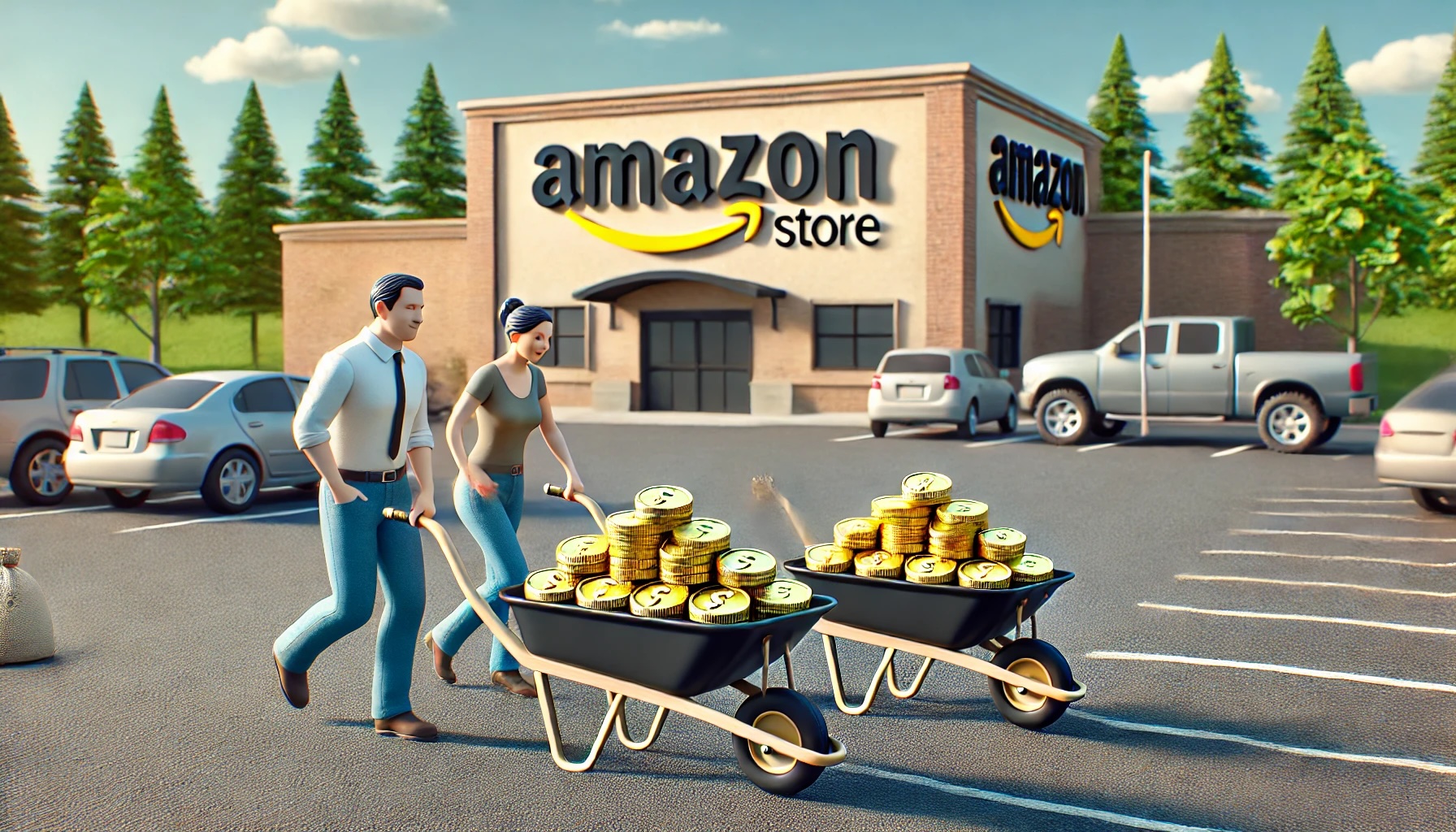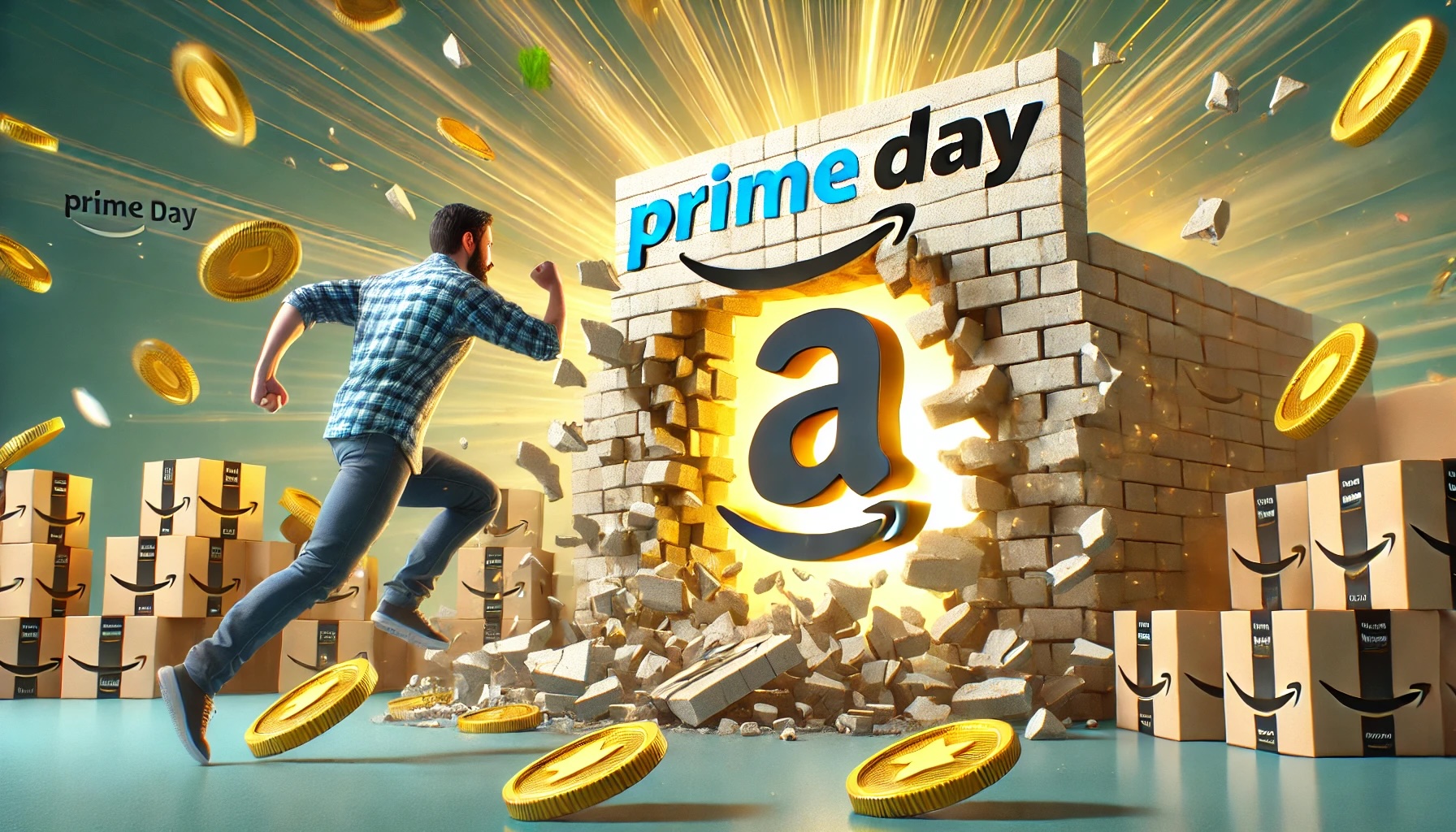The 4 Pillars of Lasting Success on Amazon
If you want to build a skyscraper, you first need a solid foundation. By paying close attention to these four key areas, your brand can have success on Amazon for years to come

Selling on Amazon can be an incredibly lucrative venture, but as the fast-growing platform becomes more sophisticated, it’s essential to understand the platform’s intricacies before diving in.
Back in the early, wild west days of Amazon, that wasn’t the case. Amazon sellers would white label a product from China, pay for a bunch of – now illegal – positive reviews, and start picking out the color of their new supercar.
OK, that’s possibly a slight exaggeration, but because of that laissez faire attitude, ecommerce entrepreneurs became a little bit complacent. Now, times have changed! Online sellers looking to succeed have to take selling on Amazon as seriously as any brick-and-mortar retailer. However, the list of things that sellers need to do correctly is shorter than you might think.
As with many endeavors, if you do a few key things right, everything else falls into place.
With that in mind, this post will focus on four crucial elements of online selling that entrepreneurs should learn before starting their journey selling on Amazon. Let’s get started!

1 – You Need to Understand Amazon’s Fee Structure
Referral Fees:
Each time you sell an item on Amazon, you’re charged a referral fee. This fee is a percentage of the item’s total sale price, including the item cost and any shipping or gift wrap charges.
Amazon charges a referral fee for each item sold. The amount depends on the product category. Most referral fees are between 8% and 15%.
The percentage you’re charged depends on the product category. For example, Amazon might charge a 15% referral fee for products in the “Electronics” category, while the fee for “Books” might be lower.
Some categories also have a minimum referral fee, so even if 15% of your item’s price is less than that amount, you’ll be charged the minimum.
Subscription Fees:
The Individual plan costs $0.99 per unit sold, and the Professional plan costs $39.99 per month no matter how many units you sell. For sellers moving significant volume or multiple products, this is usually the more economical choice.
Fulfillment Fees:
The cost to ship your orders depends on whether you fulfill your own orders or use Fulfillment by Amazon (FBA).
Fulfilled by Merchant (FBM): If you’re handling the storage and shipment of your products, you won’t pay Amazon fulfillment fees. However, you’re responsible for all storage, packaging, and shipping costs.
The FBA fulfillment fee per unit includes picking and packing your orders, shipping and handling, customer service, and product returns. Fees are based on the weights and dimensions of your product.
Products priced under $10 will automatically receive the Low-Price FBA rates with the same delivery speeds as standard FBA. The Low-Price FBA rates are $0.77 less than standard FBA rates. All Low-Price FBA rates are available with free shipping for Prime customers and standard shipping for non-Prime customers.
Additional Fees:
Long-Term Storage Fees: If items remain unsold in Amazon’s fulfillment centers for too long (over 365 days), you’ll be charged a long-term storage fee. Amazon often reminds sellers as this deadline approaches.
Removal Fees: If you want to pull your inventory out of Amazon’s fulfillment centers, either to return them or dispose of them, you’ll be charged a removal fee.
Return Processing Fees: If a customer returns an item that was shipped using FBA, you may be charged a return processing fee.

2 – Amazon SEO and Optimizing Your Product Listings
Amazon Search Engine Optimization means optimizing your Amazon listings for Amazon’s A10 algorithm so that they have the best chance of showing up for your potential customers on TOP of the Amazon product rankings. Online sellers are constantly balancing Amazon SEO with the more creative, organic goal of optimizing your product listings to appeal to the humans scrolling through the Amazon site.
You should optimize product listings as if your business depends on it. Because it does. Amazon listing optimization plays a pivotal role in determining how visible your product is to potential buyers. Just like how SEO works for search engines like Google, Amazon SEO is the process of optimizing your product listings to appear higher in Amazon search results.
Here’s a deeper dive:
Amazon Keyword Research
Start by researching keywords relevant to your product. Understand what terms potential customers searching for a product like yours might use. Full service Amazon account management agencies, such as Canopy Management, and tools like Jungle Scout, Helium 10, or Viral Launch can assist in this research specific to Amazon.
Then, optimize listings so that Amazon ranks them higher, and they’ll show up in search queries for your product category.
Amazon Product Titles
Your product title is one of the most significant factors Amazon uses to determine your product’s relevance to a search query. It should be concise yet descriptive and include your main “seed” keywords.
Amazon typically recommends starting with the brand, then the product type, and following with key features or attributes. Avoid keyword stuffing as it can make the title hard to read and may deter potential buyers.
Amazon Bullet Points
These are the key features listed near the top of your product page. They’re crucial for conversions and should highlight the main benefits and features of the product. Use your keyword research to naturally incorporate search terms into these bullet points.
Amazon Product Description
This is a more detailed overview of your product. Use this space to provide in-depth information, tell a story, or address common questions. Again, naturally incorporate keywords where they make sense.
Amazon Backend Keywords
In Seller Central, you have the option to input “backend keywords”. These are terms that won’t be visible to shoppers but can still influence how your product ranks in search. This is a great place to input synonyms, misspellings, or other relevant terms that didn’t fit naturally into your public-facing listing.
Amazon Product Images
High-quality images are crucial. Customers can’t physically touch or try out products online, so images are their primary interaction. Use high-resolution images, make sure your main image has a pure white background, show the product from multiple angles, and if possible, include lifestyle images to show the product in use. Infographics or images with embedded text can help convey key features.
Ultra-high quality images are one of the things that differentiate listings created by top Amazon agencies, and middle-of-the-road sellers. Canopy Management’s Amazon product photography and video services won’t just make your product look amazing. It’s the driving force behind our best-in-class results and a big part of the reason for our clients’ 38% average conversion rate increase.

3 – Amazon Inventory Management Can Be a Silent (Ecommerce) Killer
For Amazon sellers, mastering inventory management can be the difference between a struggling online business and one with an off-the-chart conversion rate. With tight margins and intense competition, the ability to effectively manage inventory – ensuring products are always available, but without tying up too much capital or incurring unnecessary fees – is a pivotal element of success on the platform.
Stock Availability
Running out of stock can be detrimental. When a product is unavailable, not only do you lose sales, but it can also hurt your product ranking, making it harder to regain your position once the stock is replenished.
Sales Rank
Amazon’s A10 algorithm favors products with consistent sales history. If your product is consistently available and selling, it’s more likely to rank higher in search results.
Storage Costs
Especially if using Amazon’s Fulfilled by Amazon (FBA) service, holding too much inventory can lead to high storage fees. Amazon charges sellers for the space their products occupy in the warehouse, and these fees can increase during peak seasons.
Beware of long-term storage fees. Products stored in Amazon’s fulfillment centers for more than 365 days incur additional long-term storage fees, which can eat into profit margins. Also, products that don’t sell quickly risk becoming obsolete, leading to potential losses if they have to be discounted heavily or disposed of.
Having too much capital tied up in inventory can strain a company’s finances, limiting the ability to invest in other critical areas like marketing, R&D, or expansion.
Meeting Customer Expectations
Your potential customers expect fast and reliable delivery. Effective inventory management ensures that products are available for shipment, leading to quicker delivery times, satisfied customers, and a high click-through rate.
Inventory management allows sellers to anticipate and prepare for seasonal demand fluctuations, ensuring adequate stock during peak sales periods and reducing stock for slower periods.
Effective inventory management provides insights into which products are selling and which aren’t. This data is invaluable for decision-making, from product development to marketing strategies.

4 – Positive Amazon Reviews Drive Sales Velocity
On Amazon, after a purchase, customers are given the opportunity to rate and review products and the seller. These product reviews are then showcased on the product page and can be seen by future potential customers. The aggregate of these ratings is reflected in the product’s overall star rating.
Positive customer reviews build trust and validation of your Amazon product. Because online shoppers can’t physically inspect products, they rely heavily on reviews to gauge the quality and reliability of a product. That’s why a product with many positive reviews can significantly boost a potential buyer’s confidence.
Unfortunately, the opposite is also true. One negative review – especially if unanswered or later substantiated by others – can have many times the opposite effect of a single positive review.
Because Amazon’s A10 algorithm considers product reviews when determining search rankings, products with more positive reviews generally rank higher in search results, leading to more visibility and potential sales.
Products with higher ratings typically have better conversion rates. Even if two products have the same number of views, the one with better reviews is more likely to be purchased.
To Get It Right the First Time, Get Professional Guidance from Canopy Management
Beyond having a killer product that people want to buy, these four key areas will give you the best chance at long-term success on the world’s largest ecommerce platform. However, that doesn’t imply that you can stop there. Amazon is always changing in ways both large and small, which means you need to stay on top of those changes to keep competition at bay.
Likewise, mastering these four areas won’t help you to understand everything there is to know about selling on Amazon. If your brand needs some help developing a comprehensive Amazon strategy, from ad spend distribution to listing optimization best practices, consider talking to one of our veteran Amazon experts today.
Thinking About Hiring an Amazon Management Agency?
Canopy’s Partners Achieve an Average 84% Profit Increase!
Let’s talk

